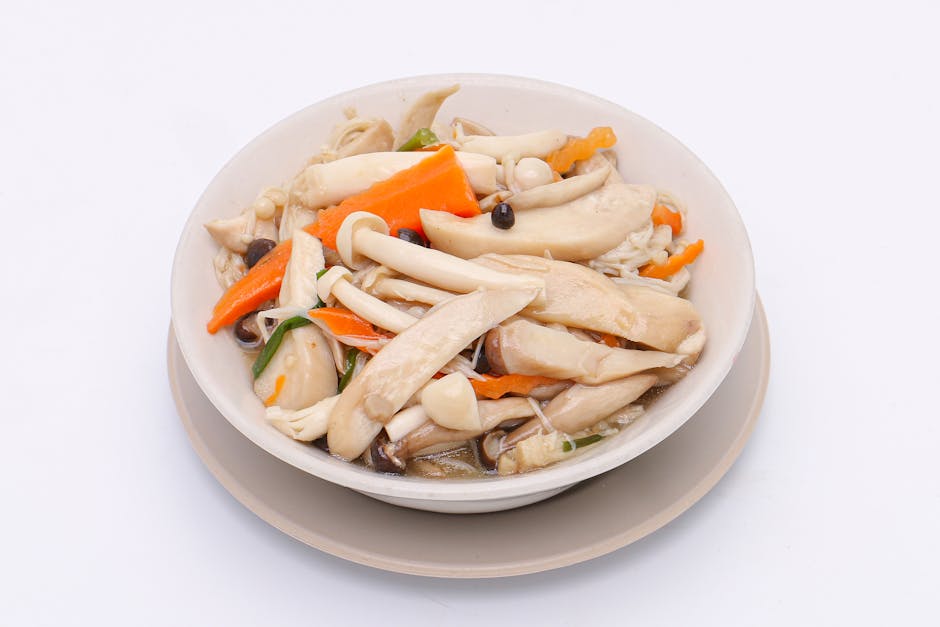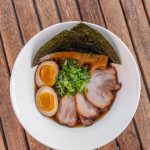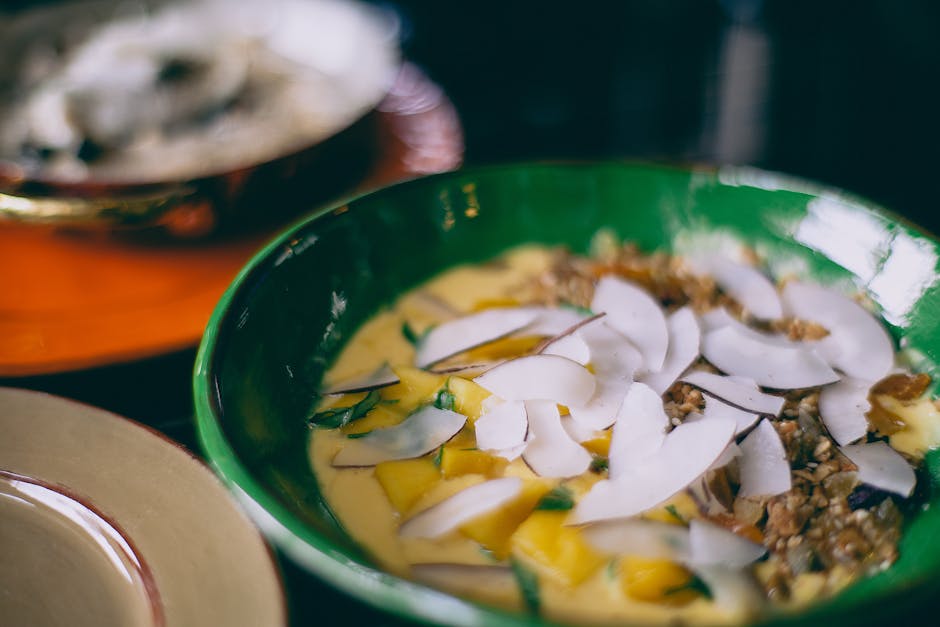Vegetable stir-fry, a culinary cornerstone across numerous Asian cuisines, boasts a history as rich and varied as its ingredients. While pinpointing a single origin is difficult, its development is intrinsically linked to the evolution of Chinese cooking. Ancient Chinese cooking techniques, emphasizing quick cooking over high heat, formed the foundation of stir-frying. This method, likely born out of necessity and resourcefulness, allowed for the efficient use of limited fuel and ingredients. Early forms might have involved simple preparations of readily available vegetables, but the technique rapidly evolved, incorporating diverse regional flavors and ingredients.
The precise timeline remains debated, but evidence suggests stir-frying emerged gradually over centuries. Some scholars trace its origins to the Han Dynasty (206 BCE – 220 CE), highlighting the increasing use of woks – the quintessential stir-fry cooking vessel – during this period. The wok’s curved sides and wide base facilitated efficient heat distribution and rapid cooking, perfectly suited to the stir-fry method. The subsequent development and spread of Buddhism in China further influenced its evolution, with Buddhist vegetarian practices promoting sophisticated vegetable-based stir-fries. This emphasis on plant-based dishes contributed significantly to the technique’s refinement and popularity.
Stir-frying’s impact transcends mere culinary convenience; it holds significant cultural importance. It’s a cornerstone of daily meals across much of East and Southeast Asia, embodying principles of resourcefulness, balance, and harmony. The diverse range of vegetables incorporated often reflects seasonal availability and regional preferences, resulting in a vast array of stir-fry variations. For example, in China alone, thousands of regional stir-fry recipes exist, each telling a unique culinary story. Beyond its daily presence, stir-fry also features prominently in celebratory meals and festivals, underscoring its deep cultural integration.
The global popularity of stir-fry is undeniable. Its simplicity, speed, and adaptability have made it a worldwide phenomenon. While precise global consumption statistics are difficult to obtain, the widespread availability of stir-fry ingredients and pre-made sauces in supermarkets worldwide hints at its immense popularity. Furthermore, its presence in countless restaurants, from high-end establishments to humble street food vendors, further underscores its significance in modern global gastronomy. The adaptability of stir-fry – incorporating ingredients from various cultures and cuisines – ensures its continued evolution and enduring appeal. It’s a testament to the power of simple, yet profoundly satisfying, cooking techniques.
Ingredients and Measurements
This recipe provides a flexible framework for your vegetable stir-fry. Feel free to adjust quantities to suit your preferences and the vegetables you have on hand. The key is to maintain a balance of textures and flavors. We’ll be using a combination of firmer and softer vegetables to ensure even cooking.
Vegetables:
- 1 cup broccoli florets: Choose firm, bright green florets for optimal texture and flavor. If using larger broccoli heads, cut them into bite-sized pieces for even cooking.
- 1 cup sliced bell peppers (assorted colors): A mix of red, yellow, and orange bell peppers adds both visual appeal and a variety of subtle sweetness. Cut them into thin strips for quicker cooking.
- 1 cup sliced carrots: Use fresh, firm carrots and peel them before slicing. Julienne or matchstick cuts are ideal for even cooking and a pleasant mouthfeel. Avoid overly thick slices, as they may require longer cooking times and become mushy.
- 1/2 cup snow peas (or sugar snap peas): These add a pleasant crunch and a touch of sweetness. Trim the ends before using. If using sugar snap peas, leave them whole or cut them in half lengthwise.
- 1/2 cup sliced mushrooms (cremini or shiitake recommended): Mushrooms add an earthy flavor and a lovely texture. Larger mushrooms should be sliced thinly to ensure they cook through properly.
- 1 small onion, thinly sliced: A white or yellow onion works well. Thinly slicing ensures that the onion cooks down without becoming overly tough. Soaking the sliced onions in cold water for 10 minutes before cooking can help to reduce their pungency.
- 2 cloves garlic, minced: Fresh garlic is highly recommended for its superior flavor. Mincing it finely ensures even distribution throughout the stir-fry.
- 1 inch piece of ginger, grated: Fresh ginger adds a warm, spicy note. Grate it finely for optimal flavor dispersion. If using pre-grated ginger, be mindful that it may contain added preservatives.
Protein (Optional):
- 1 cup cooked chicken breast, sliced: Use leftover chicken or cook some separately. Cubing or slicing it thinly helps it cook evenly with the vegetables.
- 1 cup firm tofu, pressed and cubed: Pressing the tofu removes excess water, resulting in a crispier texture when stir-fried. Cubing it ensures even cooking.
- 1/2 cup shrimp, peeled and deveined: Shrimp cooks quickly, so add it towards the end of the cooking process.
Sauce:
- 1/4 cup soy sauce (or tamari for gluten-free): Provides the savory base for the sauce.
- 2 tablespoons rice vinegar: Adds a touch of acidity to balance the sweetness and savoriness.
- 1 tablespoon honey or maple syrup: Adds a touch of sweetness. Adjust to your preference.
- 1 tablespoon cornstarch: Thickens the sauce. Mix the cornstarch with a tablespoon of cold water before adding it to the sauce to prevent lumps.
- 1 teaspoon sesame oil: Adds a nutty aroma and flavor. Add this at the very end for maximum flavor impact.
Other:
- 2 tablespoons vegetable oil: Use a high-heat oil like canola or peanut oil.
Note: These measurements are guidelines. Feel free to adjust the quantities based on your preferences and the number of servings you are preparing. Always taste and adjust seasoning as needed.
Equipment List
Preparing a delicious vegetable stir-fry requires the right tools. While you can adapt with what you have, having the appropriate equipment will significantly enhance your cooking experience and the final result. This list details the essential items, along with some helpful recommendations for optimal performance.
1. Wok: The cornerstone of any successful stir-fry is a wok. A carbon steel wok is highly recommended for its excellent heat retention and even cooking. A 14-inch wok is ideal for most home kitchens, providing ample space for stir-frying a variety of vegetables without overcrowding. Avoid non-stick woks for high-heat stir-frying as they can degrade at high temperatures. If you don’t have a wok, a large, wide-based skillet can serve as a reasonable substitute, but the results won’t be quite the same.
2. Cutting Board: A large, sturdy cutting board is crucial for efficient vegetable preparation. Choose a cutting board made of durable material like bamboo or plastic that won’t easily crack or warp. A size of at least 12×15 inches is recommended to comfortably accommodate chopping multiple vegetables. Having two cutting boards – one for raw vegetables and one for cooked ingredients – is a good practice for maintaining hygiene.
3. Knives: A sharp chef’s knife (approximately 8 inches) is essential for efficient chopping and slicing. A smaller paring knife can be helpful for trimming vegetables and performing detailed cuts. Keeping your knives sharp is paramount for safety and creating clean cuts that cook evenly. A honing steel is a valuable addition to your knife set to maintain the sharpness of your blades between professional sharpenings.
4. Measuring Cups and Spoons: Accurate measurements are crucial for achieving the right balance of flavors. Invest in a set of measuring cups and spoons for dry and liquid ingredients. Use standard measuring tools rather than estimating to ensure consistency in your stir-fries. A kitchen scale can also be beneficial for more precise measurements, especially when working with larger quantities.
5. Spatula or Stir-Fry Spatula: A wide, sturdy spatula or a dedicated stir-fry spatula with a long handle is necessary for effective stirring and tossing of the vegetables in the wok. Choose a spatula made of heat-resistant material such as silicone or wood to prevent melting or damage. The long handle is important for keeping your hands a safe distance from the hot wok.
6. Tongs: Tongs are incredibly useful for maneuvering vegetables in the wok, especially when they are nearly cooked. They allow for more delicate handling than a spatula, preventing damage to the vegetables. A pair of heat-resistant tongs is essential for this task.
7. Colander: A colander is needed to drain blanched or par-cooked vegetables before adding them to the wok. Choose a colander made from durable material that can withstand high temperatures. A fine-mesh colander is best for preventing small vegetable pieces from falling through.
8. Serving Dishes: Finally, you will need serving dishes to present your delicious vegetable stir-fry. Choose dishes that are appropriate for the quantities you’re preparing and that complement the style of your meal.
Preparation Phase: Vegetable Chopping and Prepping
The success of a delicious vegetable stir-fry hinges significantly on proper preparation. Careful chopping and prepping of your vegetables ensures even cooking, optimal texture, and a visually appealing final dish. This section details the crucial steps involved.
Choosing your vegetables: Select fresh, vibrant vegetables. For this recipe, we’ll use 1 cup broccoli florets (about 1 medium head), 1 red bell pepper (about 150g), 1 green bell pepper (about 150g), 1 medium onion (about 100g), and 2 carrots (about 150g). Feel free to substitute with your preferred vegetables, keeping in mind their varying cooking times.
Washing and Cleaning: Thoroughly wash all vegetables under cold running water. For leafy greens, consider soaking them in a bowl of cold water for a few minutes to remove any clinging dirt or debris. Remove any blemishes or damaged parts before proceeding to the chopping stage.
Cutting Techniques: Consistent cutting ensures even cooking. Aim for roughly uniform sizes to prevent some vegetables from overcooking while others remain undercooked. Here’s a guide:
- Broccoli: Cut the broccoli head into florets, aiming for roughly 1-inch pieces. Larger pieces will require a longer cooking time.
- Bell Peppers: Remove the stems and seeds. Cut each pepper in half lengthwise, then slice into thin strips (about 1/4 inch wide). This allows for quick cooking and even distribution of flavor.
- Onion: Peel the onion and slice it in half from top to bottom. Then, slice thinly from top to bottom across the cut surface. For a milder flavor, you can soak the sliced onions in cold water for a few minutes before cooking.
- Carrots: Peel the carrots and slice them into thin, half-moon shapes (about 1/4 inch thick). Alternatively, you can julienne them for a more refined look. Consider using a mandoline slicer for even, thin cuts.
Pre-preparation for optimal cooking: While not always necessary, pre-preparing certain vegetables can enhance their flavor and texture. For example, blanching broccoli florets for 1-2 minutes in boiling water before stir-frying helps to brighten their color and retain their crispness.
Organization is key: Once all the vegetables are chopped, arrange them in separate bowls. This will streamline the stir-frying process and prevent confusion. Having everything prepped and ready to go will ensure a smooth and efficient cooking experience. This is especially helpful if you are working with a large quantity of vegetables or have a busy schedule.
Important Note: The size of your vegetable cuts will affect cooking time. Smaller pieces cook faster, while larger pieces require longer cooking times. If using a mix of vegetables with varying cooking times, add the vegetables that take longer to cook first.
By following these detailed preparation steps, you’ll be well on your way to creating a stunning and flavorful vegetable stir-fry.
Sauce Preparation
The sauce is the star of any good stir-fry, bringing together all the flavors and creating a delicious, glossy coating for your vegetables. A well-balanced sauce is crucial for a successful dish, so take your time and pay attention to detail.
For this recipe, we’ll be making a classic soy-ginger sauce with a hint of sweetness and a touch of spice. The quantities below are for approximately 4 servings, but you can easily scale them up or down to suit your needs. Remember to adjust the seasoning to your personal preference – taste as you go!
Ingredients:
- ¼ cup soy sauce (low sodium preferred for better control of saltiness)
- 2 tablespoons rice vinegar (adds brightness and acidity)
- 2 tablespoons mirin (sweet rice wine, adds subtle sweetness and depth)
- 1 tablespoon grated fresh ginger (use more or less depending on your ginger preference)
- 1 tablespoon honey or brown sugar (adjust to your desired level of sweetness)
- 1 teaspoon sesame oil (adds nutty aroma and flavor)
- ½ teaspoon cornstarch (slurry to thicken the sauce)
- ¼ teaspoon red pepper flakes (optional, for a touch of heat)
- 1 tablespoon water (to create the cornstarch slurry)
Instructions:
First, prepare the cornstarch slurry. In a small bowl, whisk together the cornstarch and water until completely smooth. This prevents lumps from forming in your sauce. Ensure there are no visible granules of cornstarch; a smooth slurry is key to a nicely thickened sauce.
Next, combine all the remaining sauce ingredients in a small saucepan. This includes the soy sauce, rice vinegar, mirin, grated ginger, honey/brown sugar, sesame oil, and red pepper flakes (if using). Stir well to ensure everything is evenly incorporated.
Bring the sauce to a simmer over medium heat. Stir frequently to prevent sticking and burning. Once it starts to simmer, reduce the heat to low and continue to simmer for about 2-3 minutes, allowing the flavors to meld together. The sauce will slightly thicken naturally during this time.
Slowly whisk in the cornstarch slurry. This is a crucial step; add it gradually while whisking constantly. This prevents clumping and ensures a smooth, glossy consistency. Continue to simmer for another minute, or until the sauce has reached your desired thickness. It should coat the back of a spoon.
Taste and adjust seasoning. Add more soy sauce for saltiness, honey/brown sugar for sweetness, rice vinegar for acidity, or ginger for a stronger ginger flavor, as needed. The sauce should be balanced, with a harmonious blend of sweet, sour, salty, and spicy (if using).
Once you’re satisfied with the flavor and consistency, remove the sauce from the heat and set aside until ready to use. Pour the sauce over your stir-fried vegetables just before serving to prevent the sauce from becoming too thick.
Cooking Techniques: Stir-frying Method
Stir-frying is a quick and healthy cooking method that preserves the vibrant colors and crisp-tender texture of vegetables. It relies on high heat and constant movement to cook ingredients rapidly in a small amount of oil. Mastering this technique is key to creating a delicious and successful vegetable stir-fry.
Preparation is paramount. Before you even begin heating your wok or pan, ensure all your vegetables are prepped. This means washing, trimming, and cutting them into uniformly sized pieces. Consistency in size ensures even cooking; smaller pieces will cook faster than larger ones, leading to some vegetables being overcooked while others remain underdone. Aim for bite-sized pieces, generally around 1/2 inch to 3/4 inch in size. This applies to both firm vegetables like broccoli and softer ones like bell peppers.
Choosing the right pan is crucial. While a wok is traditionally used, a large, wide-bottomed skillet or frying pan will work equally well. The key is to have a pan with a large surface area to allow for even heat distribution. Avoid overcrowding the pan; this will lower the temperature and result in steaming instead of stir-frying. Work in batches if necessary.
Oil selection matters. Use a high-smoke-point oil like peanut oil, vegetable oil, or canola oil. About 1-2 tablespoons should suffice for most stir-fries. Heat the oil over high heat until it shimmers – this indicates it’s ready for the vegetables. Do not overheat the oil as this can lead to burning and a bitter taste.
The stir-frying process itself is dynamic. Add your vegetables to the hot oil in stages, starting with the firmer vegetables that take longer to cook (like carrots, broccoli stems) and adding more delicate ones (like bell peppers, spinach) towards the end. Constantly stir and toss the vegetables to ensure even cooking and prevent sticking. Use a spatula or tongs to keep the ingredients moving. This continuous movement is essential for achieving that signature stir-fried texture.
Seasoning is crucial. Add your seasonings – soy sauce, ginger, garlic, and other spices – throughout the cooking process. A common technique is to add a small amount of seasoning at the beginning to help sauté the vegetables, then add more towards the end to enhance the final flavor. Taste as you go and adjust the seasoning according to your preference.
Timing is everything. Stir-frying is fast. The entire process, from adding the first vegetable to removing the finished dish, should usually take no more than 10-15 minutes. Overcooking will result in mushy vegetables, while undercooking will leave them crunchy and raw. Pay close attention to the vegetables’ texture to determine doneness.
Finishing touches. Once the vegetables are cooked to your liking, remove them from the heat immediately to prevent further cooking. You can add a sprinkle of sesame seeds or chopped green onions for added flavor and visual appeal. Serve immediately to enjoy the stir-fry at its peak freshness and flavor.
Serving Suggestions
Your delicious vegetable stir-fry is now ready, and the possibilities for serving are endless! Here are some ideas to elevate your culinary experience and ensure your stir-fry is a memorable meal.
Serving it as a Main Course: For a hearty and satisfying main course, aim for approximately 1.5 to 2 cups of stir-fry per person. This quantity provides a good balance of vegetables and flavor. Consider adding a protein source to make it even more substantial. 3-4 ounces of cooked chicken, tofu, shrimp, or beef would complement the vegetables beautifully. Cut the protein into bite-sized pieces and add it to the stir-fry during the last few minutes of cooking to ensure it’s heated through without being overcooked.
Accompanying Starches: To complete your meal, serve your stir-fry alongside a starch. 1/2 to 3/4 cup of cooked rice (brown rice, white rice, or jasmine rice) is a classic and versatile choice. Alternatively, you could serve it with 1/2 cup of noodles, such as egg noodles, udon noodles, or soba noodles. For a healthier option, consider serving it with 1 cup of quinoa or 1/2 cup of couscous.
Garnishes and Flavor Enhancers: A few simple garnishes can significantly enhance the visual appeal and flavor profile of your stir-fry. A sprinkle of 1-2 tablespoons of toasted sesame seeds adds a nutty aroma and delightful crunch. Fresh herbs like cilantro or chopped green onions (1-2 tablespoons) provide a vibrant pop of color and freshness. A squeeze of 1/2 to 1 lime adds a bright, citrusy note that cuts through the richness of the vegetables and sauce. Consider a drizzle of 1-2 teaspoons of chili oil for an extra kick, if desired.
Serving Temperature: Serve your stir-fry immediately after cooking to enjoy its optimal flavor and texture. The vegetables should be tender-crisp, and the sauce should be evenly distributed. If you need to prepare it ahead of time, ensure it’s stored properly in an airtight container in the refrigerator and reheated gently before serving. Avoid over-reheating, as this can lead to a loss of texture and flavor.
Creative Serving Styles: Don’t be afraid to get creative with your presentation! You can serve the stir-fry in individual bowls for a more elegant presentation. Alternatively, you could arrange it on a large platter family-style, allowing guests to serve themselves. If you’re serving it as part of a buffet, consider adding small bowls of garnishes and sauces, allowing guests to customize their stir-fry to their preference.
Pairing with Drinks: A light and refreshing beverage pairs perfectly with the flavors of a vegetable stir-fry. Consider serving it with iced tea, a crisp white wine, or a light beer. For a non-alcoholic option, sparkling water with a slice of lime is a refreshing choice.
Leftovers: Leftover stir-fry can be stored in an airtight container in the refrigerator for up to 3 days. Reheat gently in a pan or microwave until heated through. The flavors will often deepen overnight, resulting in an even more delicious meal the next day.
Vegetable Stir Fry: Recommendations
This vegetable stir-fry recipe is a delicious and healthy meal option, packed with nutrients and flavor. To ensure you get the most out of your stir-fry, consider these recommendations for preparation, serving, and storage.
Serving Suggestions: This versatile stir-fry is excellent on its own as a light meal or a side dish. For a more substantial meal, serve it over cooked rice, quinoa, or noodles. The nutty flavor of brown rice pairs particularly well with the stir-fry’s vibrant vegetables. You can also serve it with a dollop of plain yogurt or a sprinkle of toasted sesame seeds for added texture and flavor. For a protein boost, consider adding grilled chicken, tofu, shrimp, or beef. The stir-fry’s flavors complement lean proteins beautifully.
Storage Conditions: For optimal freshness and flavor, consume your stir-fry within 2-3 days of preparation. Store leftovers in an airtight container in the refrigerator. Avoid storing the stir-fry for extended periods, as the vegetables may lose their crispness and texture. Reheating is best done gently in a pan on the stovetop or in the microwave, avoiding overcooking which can lead to mushy vegetables.
Complementary Dishes: To create a balanced and satisfying meal, consider pairing your vegetable stir-fry with complementary dishes. A simple side salad with a light vinaigrette can add freshness and contrast in texture. For a more substantial meal, serve it alongside steamed dumplings or spring rolls. If you’re looking for a heartier option, consider serving it with a side of crusty bread or naan to soak up the delicious sauce.
Nutritional Information (per serving – approximate values will vary based on ingredients and portion size): Calories: Approximately 250-350 calories. Protein: 5-10 grams (depending on added protein). Fat: 5-15 grams (depending on oil used and added protein). Carbohydrates: 30-50 grams (depending on serving size and added grains). Fiber: 8-12 grams (a significant source of dietary fiber from the vegetables). Vitamins and Minerals: Rich in Vitamin A, Vitamin C, Vitamin K, potassium, and other essential minerals. Note: These are estimated values and can vary significantly based on the specific vegetables used and the quantity of added oils or sauces.
Important Considerations: Adjust seasoning to your preference. Feel free to experiment with different sauces, spices, and herbs to customize the flavor profile. Use fresh, high-quality vegetables for the best taste and nutritional value. Don’t overcrowd the pan while stir-frying, as this can lead to steaming instead of stir-frying, resulting in soggy vegetables. Work in batches if necessary to ensure even cooking. Finally, enjoy responsibly! This healthy and delicious dish is perfect for a quick weeknight meal or a more elaborate dinner party.





